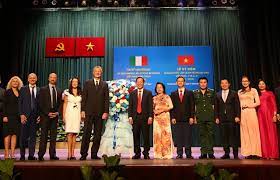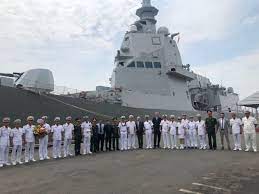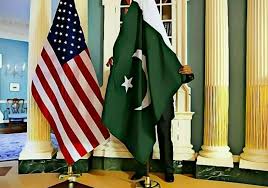Italy and Vietnam mark 50 years of diplomatic relations

Rome: This year, Italy and Vietnam celebrated the 50th anniversary of their diplomatic relationship, which was officially established on March 23, 1973. Since then, and particularly since the 1990s, the political ties have made steady progress and Italy was “one of the first European countries to resume and develop economic cooperation with Vietnam.”

On October 25, Maria Tripodi, the undersecretary of state to Italy’s Ministry of Foreign Affairs, co-chaired the VIII Mixed Economic Commission with Nguyen Sinh Nhat Tan, Vietnam’s deputy minister of industry and trade. The meeting focused on a range of strategic sectors, such as trade and investment, industry, energy, environment, infrastructure, health, agriculture, science and technology, culture, and tourism. The Italy-ASEAN Association, a think tank, claimed that the occasion highlighted the “already excellent relations between the two countries,” as reflected in their growing bilateral trade. In 2022, Italy exported about $1.78 billion worth of goods to Vietnam – mostly machinery, textile, and pharmaceutical products – a 21 percent increase from the $1.47 billion exported in 2021. At the same time, Vietnam’s exports to Italy last year were valued at $4.4 billion, an increase of 14 percent from 2021. The total two-way trade in 2022 amounted to $6.2 billion, an increase of 11 percent compared to 2021, and the Italy-ASEAN Association noted that Vietnam was “the first trading partner of Italy in the ASEAN region, while Italy is one of Vietnam’s main partners in Europe.” Concerning foreign direct investment, Vietnam received $70 million of newly registered capital from Italy in the first seven months of 2023. About 6.000 Italian firms operate in the Southeast Asian country and the Italian government has listed Vietnam as one of the 20 countries prioritized for trade and investment promotion until 2030.
Defense cooperation is also deepening. In July, the 4th Vietnam-Italy Defense Policy Dialogue was held in Rome. A delegation from the Vietnamese Defense Ministry, led by its Deputy Minister Senior Lt. Gen. Hoang Xuan Chien, met Italian Undersecretary of State for Defense Matteo Perego Cremnago. Both parties expressed an interest in boosting cooperation in various fields, such as defense exchanges, training to raise troops’ capability, cooperation in the defense industry and technology transfer for the production of dual-use products, and the sharing of experience in U.N. peacekeeping operations. Furthermore, the two sides emphasized the importance of maintaining peace, stability, and security (particularly at sea), and advocated for the peaceful settlement of disputes in accordance with the 1982 U.N. Convention on the Law of the Sea (UNCLOS).
This was in line with Italy’s growing commitment to the Indo-Pacific region, after years of lethargy due to the country’s overwhelming focus on the Mediterranean Sea and North Africa. Nicola Casarini, associate fellow at the International Affairs Institute, a think tank based in Rome, claims that Italy “is catching up fast with the other major European countries that in recent years have outlined their visions for the region,” and that it “is currently adding its voice as well as its military assets to Europe’s burgeoning presence in the area with the aim to support the United States, Japan and other like-minded partners to uphold a ‘free and open’ Indo-Pacific.”
The latest signal of this new commitment towards the region was the deployment of the Italian Navy’s Nave Morosini, the newest multipurpose offshore patrol vessel in its arsenal, to East and Southeast Asia from April to September 2023. The naval campaign lasted five months, during which Nave Morosini paid a visit to the Singapore International Maritime Defense Exhibition and the Langkawi International Maritime to Aerospace Exhibition in Malaysia. Moreover, the vessel sailed through the South China Sea as part of the Indonesian-led Komodo 23 exercise, which focused on finding, rescuing, and evacuating civilians, and witnessed the involvement of all the major countries of the Asia-Pacific.
The patrol boat carried out activities of naval diplomacy in 15 ports and 14 countries across the region and beyond, including Bangladesh, Djibouti, India, Oman, Pakistan, and Saudi Arabia. Nave Morosini also visited the Nha Rong harbor in Ho Chi Minh City in May, with the Italian embassy in Hanoi describing the visit as “one of the highlights of the 50th anniversary of diplomatic relations between Italy and Vietnam.” Apart from an onboard reception, a photographic exhibition, and a friendly football match between the sailors of the Italian and Vietnamese navies, a joint passing exercise with a Vietnamese ship was carried out. Speaking in Hanoi in July, Perego Cremnago declared that there was “great potential to intensify Italy-Vietnam relations in the defense sector with the aim of achieving mutual benefits.”
Conversely, Vietnam has been seeking to strengthen its relationship with European countries for more than a decade through the establishment of strategic partnerships. With Italy, Hanoi signed a Strategic Partnership in 2013 as well as an executive protocol on education, a letter of intent to set up an Italian-Vietnamese center of excellence for training, and a memorandum of cooperation in the defense sector. The Strategic Partnership was renewed last June when Vietnamese President Vo Van Thuong met his Italian counterpart Sergio Mattarella. In a joint statement, the two heads of state “welcomed the positive and extensive achievements in the Viet Nam-Italy relationship.”
As previously mentioned, Vietnam is just one aspect of Italy’s new focus on the Indo-Pacific. Rome has declared its intention to strengthen relationships with other Southeast Asian countries, perhaps even more solidly after the recent strains with Beijing, which originated from the decision of Prime Minister Meloni to pull out from the Belt and Road Initiative. Italy’s “quiet pivot” to the Indo-Pacific has begun and the strong relationship it has developed with Vietnam is just one case in point.





